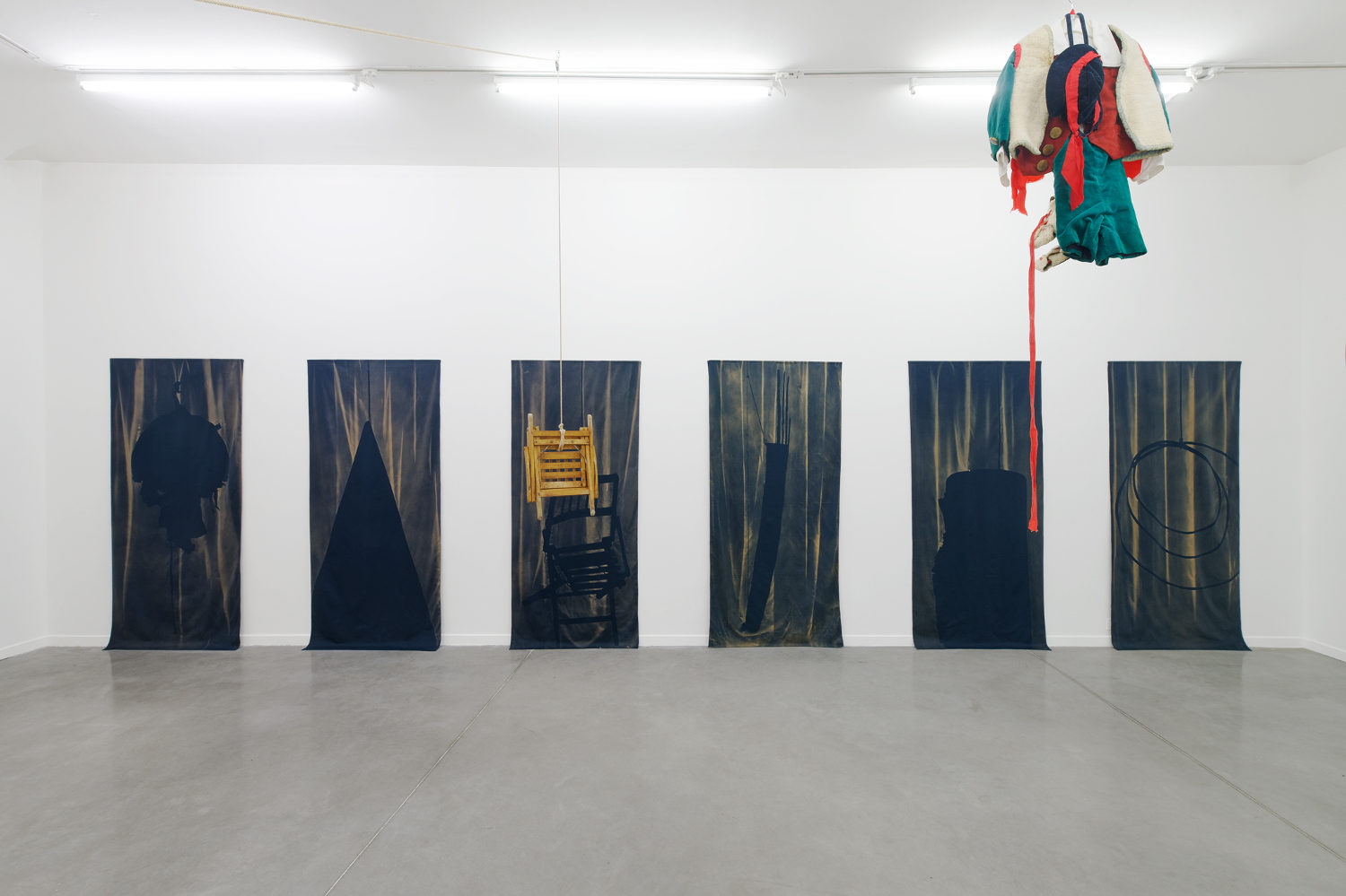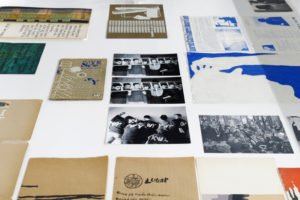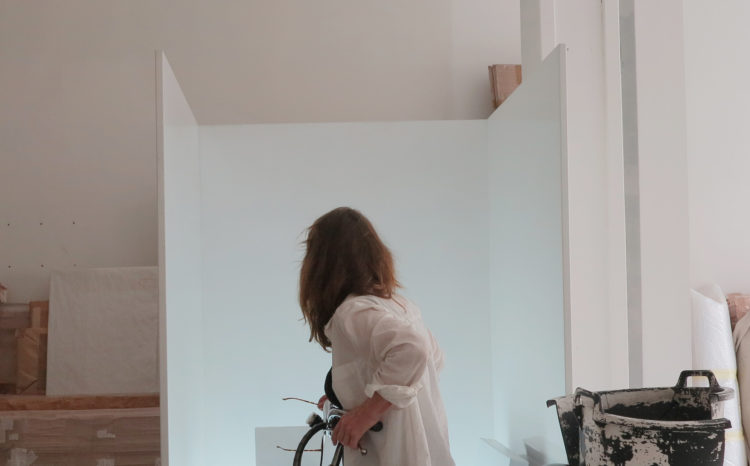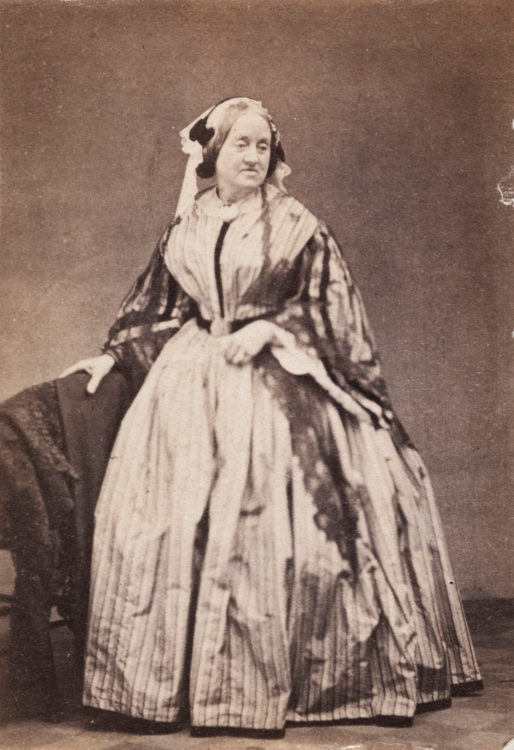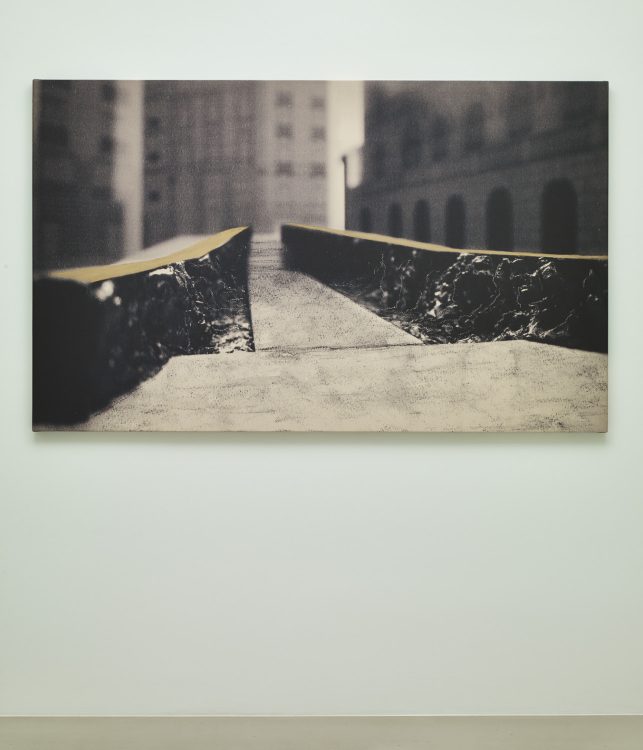Review
Exhibition view Ulla von Brandenburg. L’hier de demain, Mrac, Sérignan, 2019, © Photo: Aurélien Mole
This spring in the south of France, the musée régional d’Art contemporain (MRAC) in Sérignan and the centre régional d’art contemporain (CRAC) in Sète hold three remarkable solo exhibitions devoted to artists from three different generations: Lourdes Castro, Ulla von Brandenburg, and Laura Lamiel.
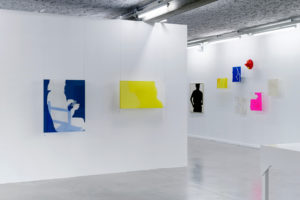
Exhibition view Lourdes Castro. Ombres & Comaginie, Mrac, Sérignan, 2019, © Photo: Aurélien Mole
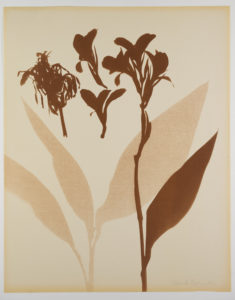
Lourdes Castro, Grand Herbier d’ombres (detail), 1972, Asplenium adiantum, Cabrinhas, print on heliographic paper, Nouveau Musée national de Monaco collection, © Photo: Daniel Mille, © NMNM, Principauté de Monaco
At MRAC, the L. Castro exhibition – the artist’s first ever monographic show in France – features in its entrance a life-size photographic print of the seated silhouettes of Castro and her husband, René Bertholo, eating lunch, painted onto the wall of their Parisian apartment on the rue des Saints-Pères, while a “real-life” table, chair, and dishes complete the scene. This particular example encompasses the preoccupations of a body of work that the artist has developed since the 1950s; that is, portraiture in relation to domestic and intimate aspects, expressed through the use of projected shadows. L. Castro was born in 1930 on the Portuguese island of Madeira, where she currently resides, and later spent almost twenty-five years of her life in Paris, where she became acquainted with the gallerist Édouard Loeb, critic Pierre Restany, and a number of artists who were close to the Nouveau réalisme and Figuration narrative movements. Her exhibition is organised in series, starting with examples of how Dadaism, Surrealism, Arman’s accumulations, and Joseph Cornell’s boxes influenced her Caixas [Boxes] of assembled and painted objects from the early 1960s. Her first uses of shadows appear as early as 1962, with her dada-like collages of household objects on sensitised screen-printing silk. She used this form of proto-photographic process again in her Grande Herbário de Sombras [Large Herbarium of Shadows, 1972], which is shown in its entirety in a room dedicated solely to it, and comprises 100 plant species from the Island of Madeira fixed on heliographic paper exposed to direct sunlight – a piece that is in some respects reminiscent of pioneer Anna Atkins’ cyanotypes.
L. Castro was quick to use the process of projected shadows in portraits of her friends and professional acquaintances, at first in painting, then by utilising the luminous properties and depth effects of single or multiple layers of Plexiglas. There is great enjoyment to be found in discovering this galaxy of artistic personalities as one reads the names of her models on the labels: artists Valerio Adami, Milvia Maglione, and Marta Minujín; gallerist É. Loeb, actress Micheline Presle, and so forth. In addition to her work on half-length portraits, Castro revitalised the approach of the genre starting in 1968 by developing her Sombras deitadas [Recumbent Shadows], embroidered on sheets and displayed hanging or horizontal. She also reworked the classic treatment of still lifes in her series Sombras à Volta de um Centro [Shadows around a Centre, 1980 and 1985], semi-abstract bouquet-shaped compositions shown extending from below the geometric shape of the vase that holds them. The exhibition also gives prominence to her writing and artist books – especially her embroidered word books – and to her role in the creation of the review KWY (1958–1964)1, which provided a wonderful expressive outlet for an entire generation of creators around the world seeking to rethink the language of art.
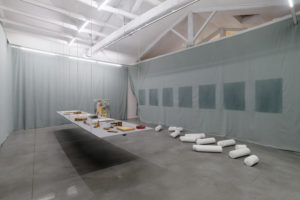
Exhibition view Ulla von Brandenburg. L’hier de demain, Mrac, Sérignan, 2019, © Photo: Aurélien Mole

Exhibition view Ulla von Brandenburg. L’hier de demain, Mrac, Sérignan, 2019, © Photo: Aurélien Mole
Parallel to the novelty of this L. Castro retrospective in France, the exhibition devoted to U. von Brandenburg (born in 1974) echoes and weaves connections with the latter, offering us a journey through a total work of art. The public is invited to wander through a colourful series of spaces – the red room, then the green, etc. – interspersed with 16 mm and Super 8 films, all set to the soundtrack of a melody sung by the artist and her assistants. Shadows also play a part here – the shadows that the suspended graphic works and accessories have left on the wall hangings – as do accumulations of objects and documents taken from the artist’s personal archives. The field of references and ensuing atmosphere are, however, quite different. U. von Brandenburg allows us to see a world informed by theatrical apparatuses, secret and utopian communities, parascience and esoteric languages – in other words, anything that might venture beyond reality.
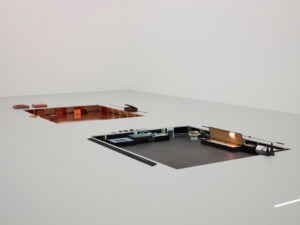
Exhibition view Laura Lamiel. Les yeux de W, CRAC Occitanie, Sète, 2019, L’Espace du dedans (séquence 3), 2014-2019, copper, wood, leather suitecase, wood boxes, drawings, photographs, steel enamelled, fluorescent tubes, diverse elements, variable dimensions, CRAC Occitanie production

Exhibition view Laura Lamiel. Les yeux de W, CRAC Occitanie, Sète, 2019, foreground: Forclose 1, 2*, 3*, 4*, 5*, 2017-2018, steel, plexiglas, mirror, drawings, photographs, steel brick enamelled, fluorescent tubes, fabric, paper, diverse objects, 85 × 205 × 88 cm each, CRAC Occitanie production, on the wall: Têtes perdues, Racines, Bouches, 2018, mixed media on paper, pencil, India ink, pencil-drawn, lipstick, 51.5 × 41.5 × 1.5 cm each, CRAC Occitanie production, © Photo: Marc Domage
The same kind of precision – or even tension – in the treatment of space and arrangement of objects can be found in L. Lamiel’s monographic exhibition at CRAC in Sète.2 The artist (born in 1948) has taken full stock of the monumental nature of the exhibition space and, in room after room, has created an installation that echoes and reworks the Cellules de constructions [Construction Cells] that she has developed since the 1980s, which are made from white enamelled steel and neon lights, and function as minimalistic enclosures that question their own porosity to the outside world through the inclusion of found and collected materials and objects – notebooks, suitcases, flattened gloves, wadding… Since the early 2010s, her visual vocabulary has also seen the addition of unsettling one-way mirrors and warmer tones of copper and brass. In Sète this artistic language occupies even the floor, with L’Espace du dedans (séquence 3) [The Space Within (Sequence 3), 2014–2019], shown in the first room, in which her “cells” – tangible spaces or simple luminous demarcations – come out from under the flooring. On the upper floor, the artist greets us with a new, original direction for her artistic explorations, both expressionistic and violent: a series of drawings in which crossed out, blood red faces unexpectedly make an appearance. The colour red also finds an echo in the various objects and threads that hang down to the floor underneath the clear tables of the installation Forclose (2017–2018)3, the reverse side of which is spotless white. This play on contrasts between the front and back of the piece concludes the exhibition with a note of underlying violence and pushes the overall feeling of tension to its limit.
Lourdes Castro. Ombres et Compagnie, curated by Anne Bonnin, from 17 February to 2 June 2019, musée régional d’Art contemporain Occitanie/Pyrénées-Méditerranée (Sérignan, France).
Ulla von Brandenburg. L’hier de demain, curated by Sandra Patron, 17 February to 2 June 2019, musée régional d’Art contemporain Occitanie/Pyrénées-Méditerranée (Sérignan, France).
Laura Lamiel. Les yeux de W, curated by Marie Cozette, 16 February to 19 May 2019, centre regional d’art contemporain Occitanie/Pyrénées-Méditerranée (Sète, France).
With R. Bertholo, Christo, António Costa Pinheiro, Gonçalo Duarte, José Escada, João Vieira, and Jan Voss.
2
The exhibition comes with a monograph published in May 2019 by Paraguay Press.
3
The title refers to Jacques Lacan’s theory of foreclosure, which designates a defence mechanism specific to psychosis.
Hanna Alkema, "Shadows & spaces for mental projection: Lourdes Castro, Ulla von Brandenburg & Laura Lamiel in Occitanie." In Archives of Women Artists, Research and Exhibitions magazine, . URL : https://awarewomenartists.com/en/magazine/ombres-et-espaces-de-projection-lourdes-castro-ulla-von-brandenburg-et-laura-lamiel-en-occitanie/. Accessed 2 July 2025
